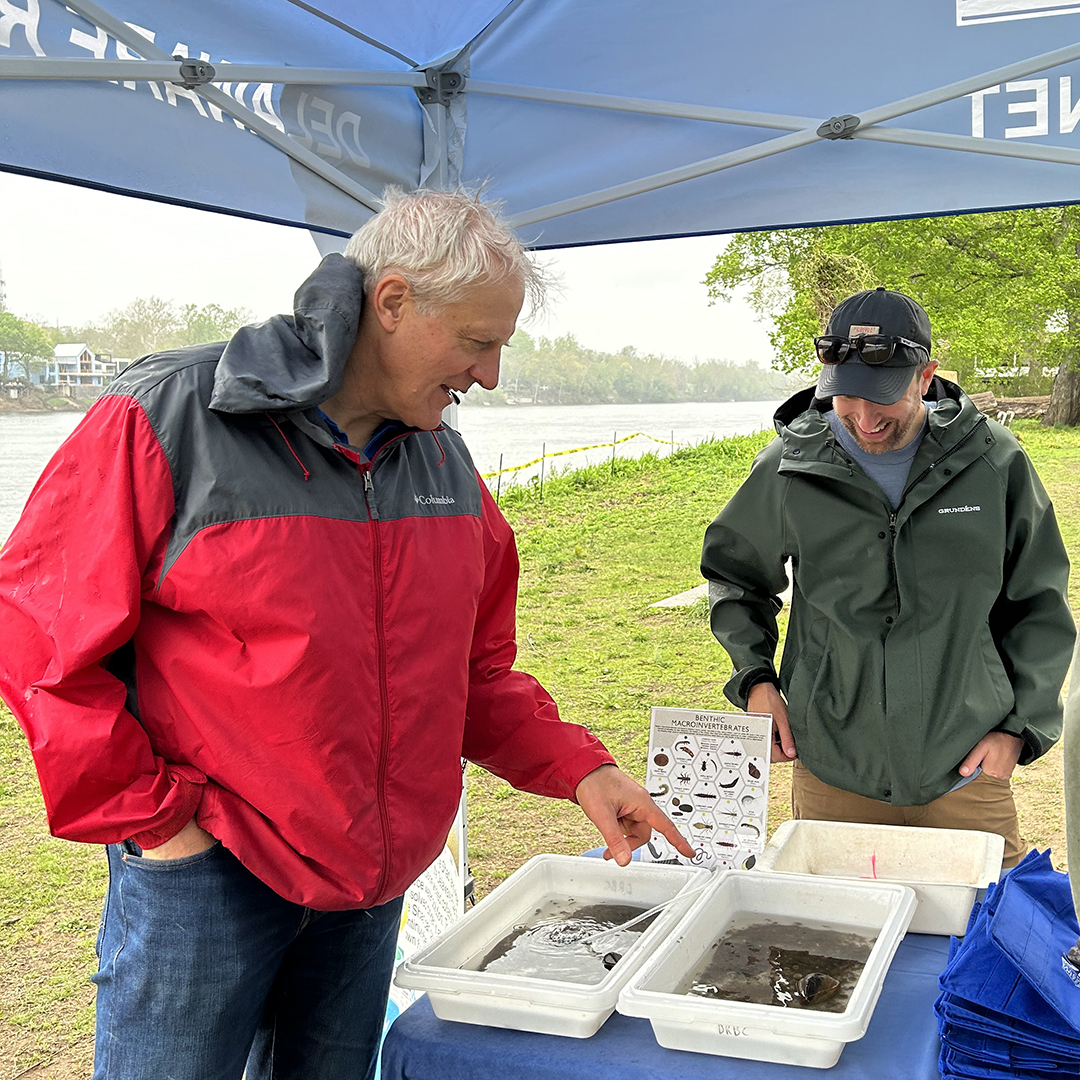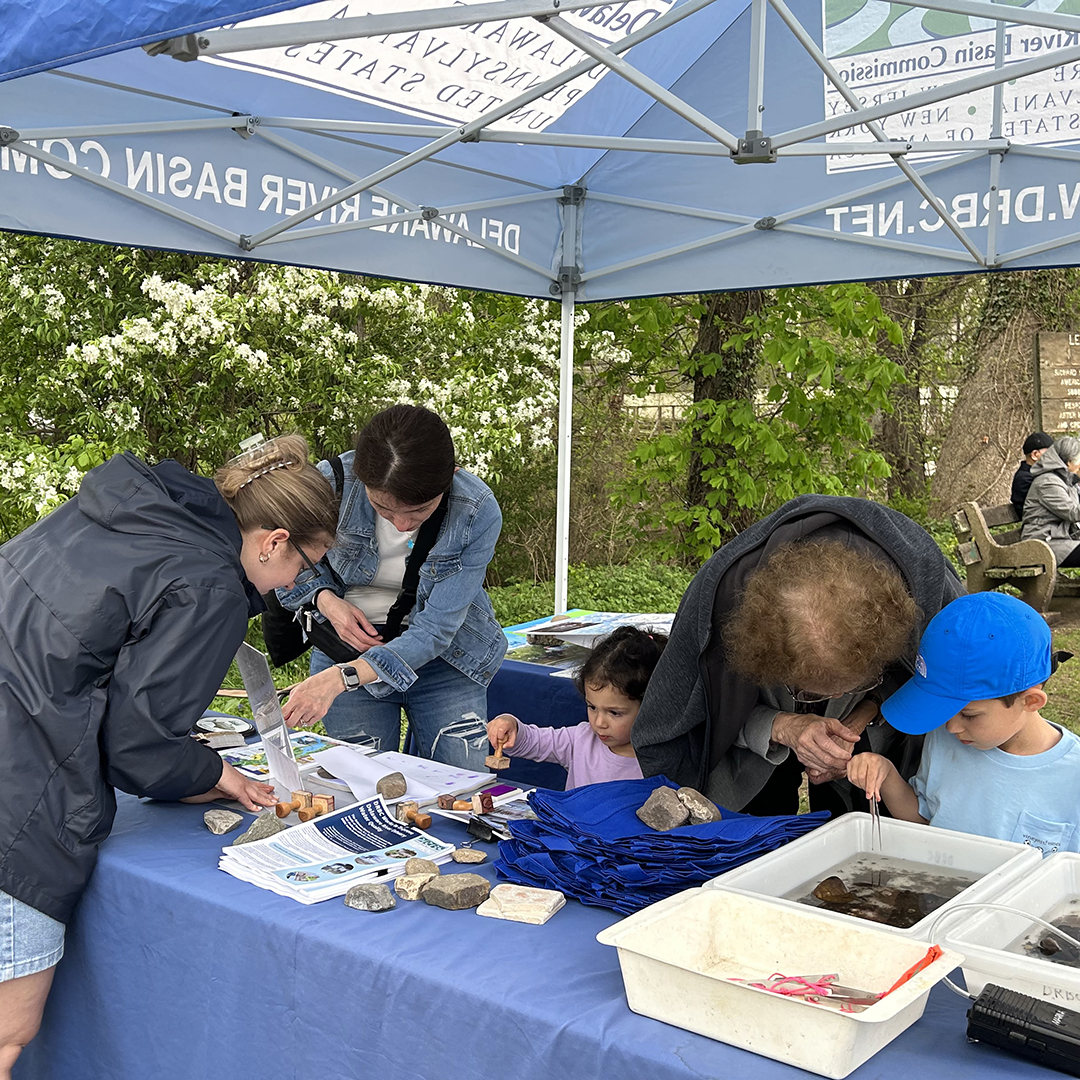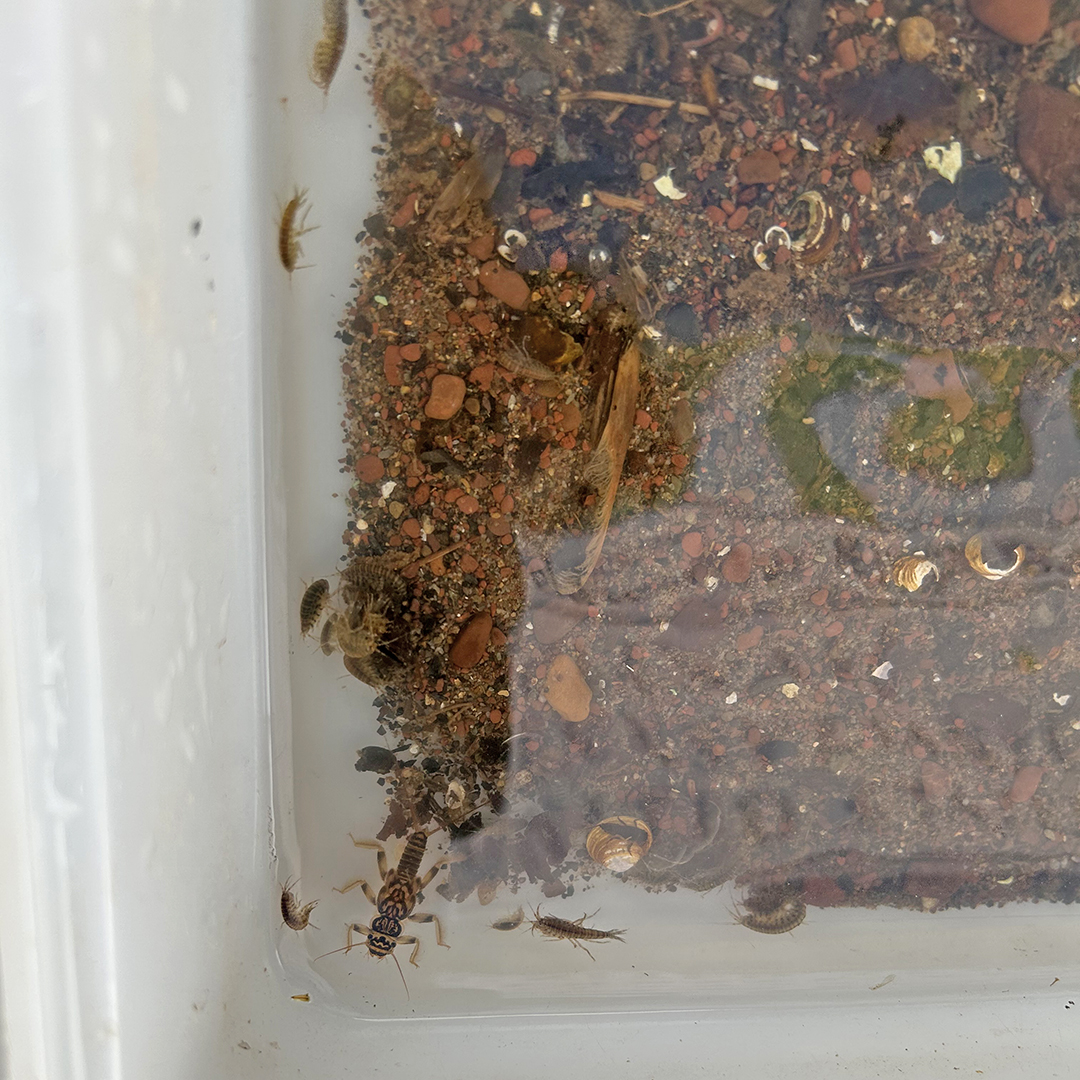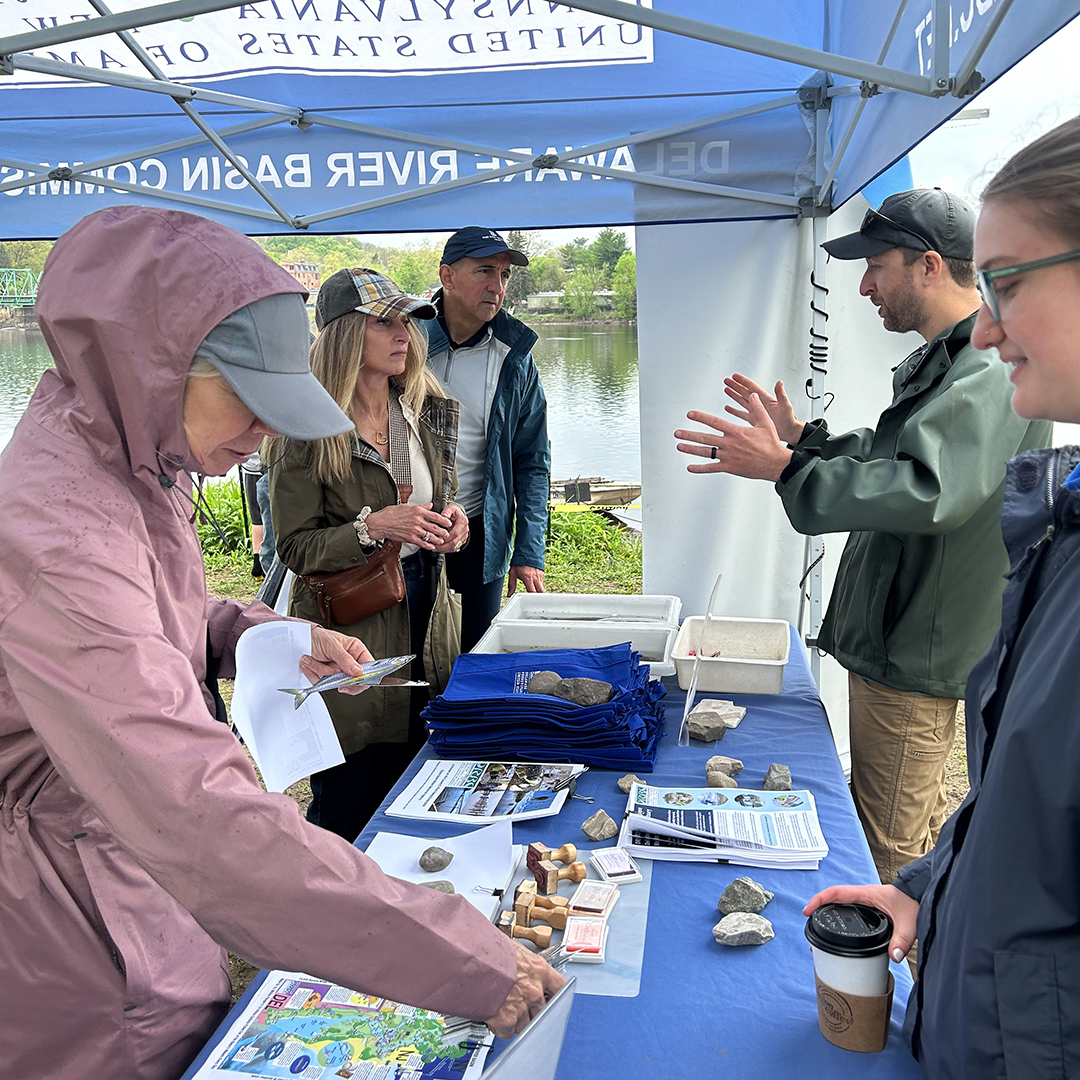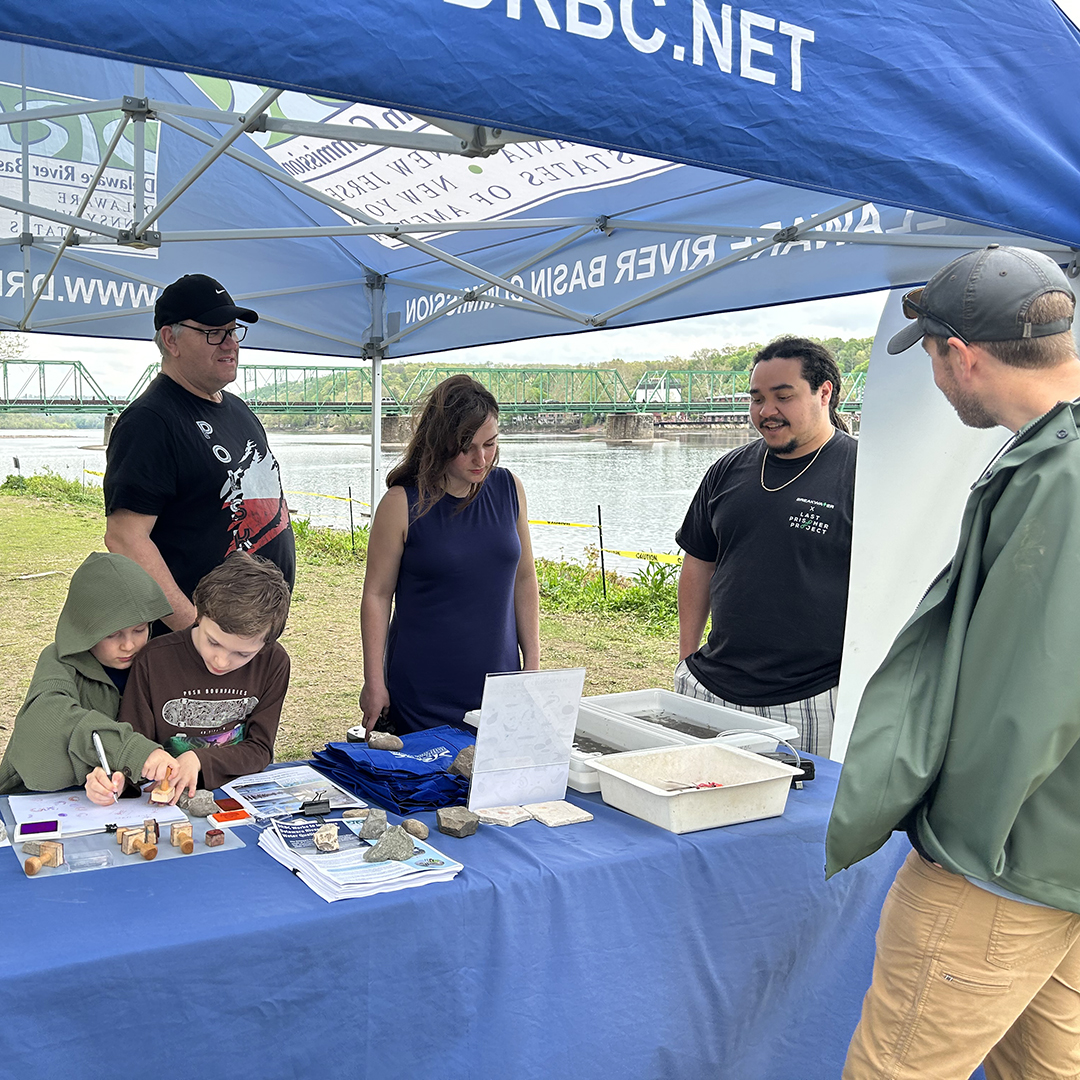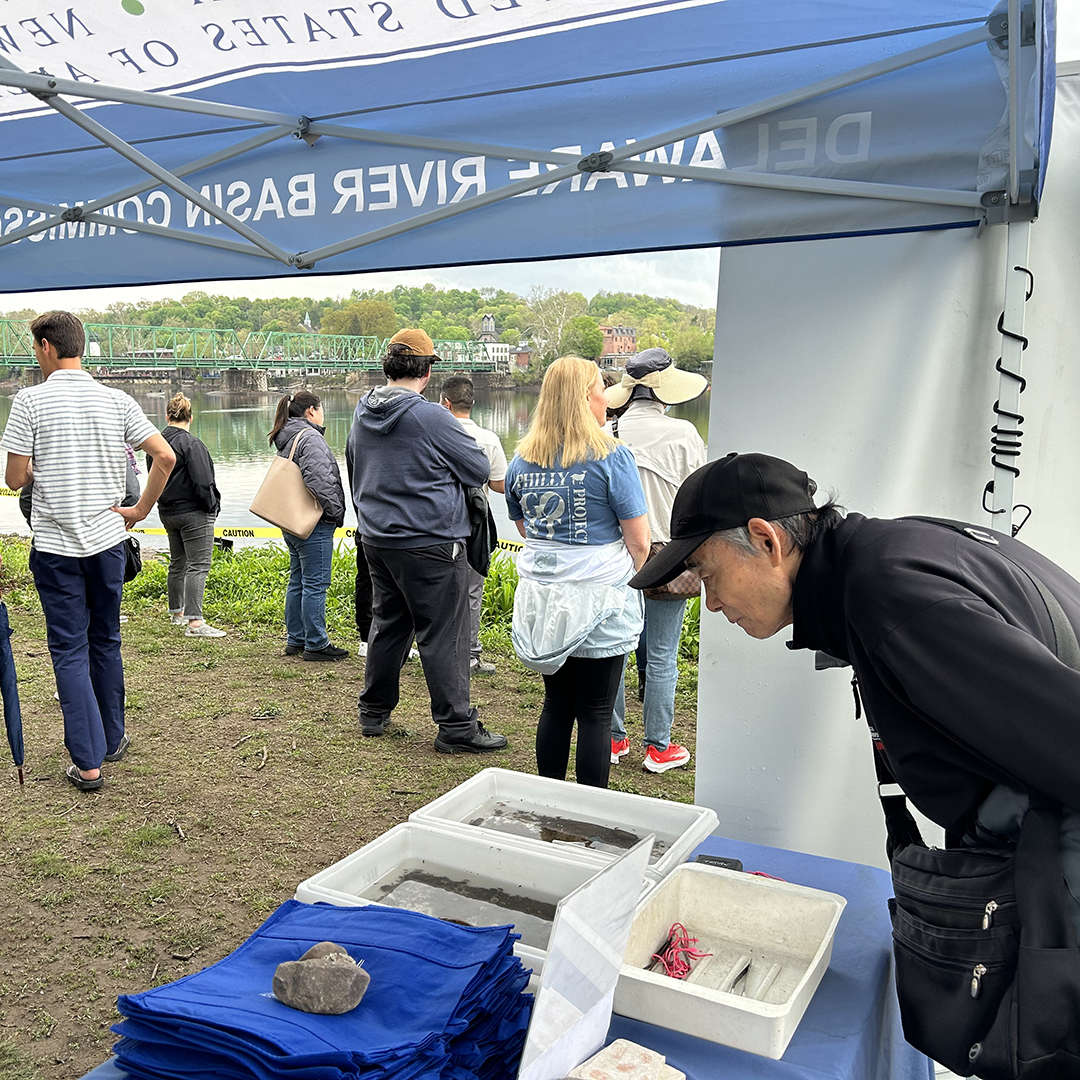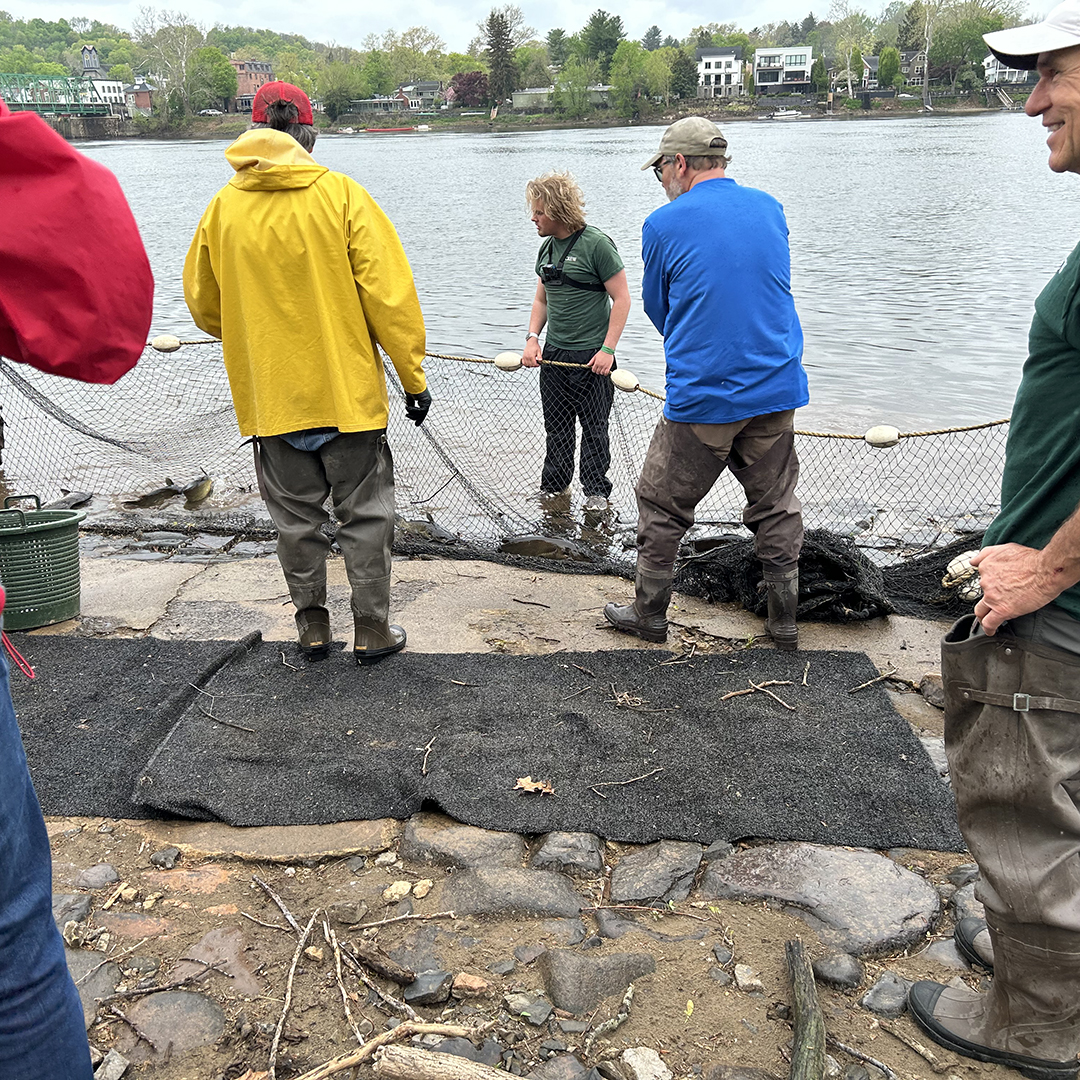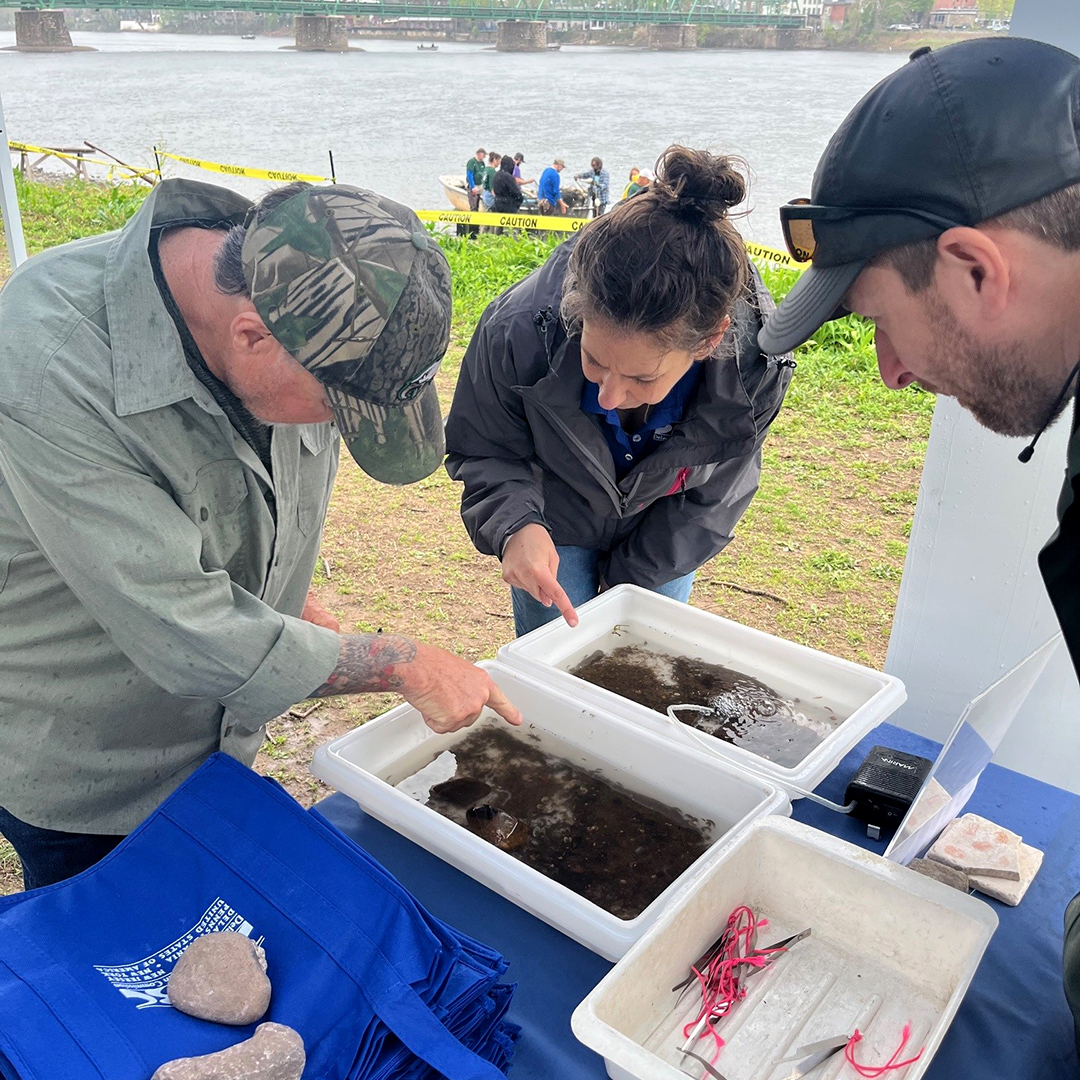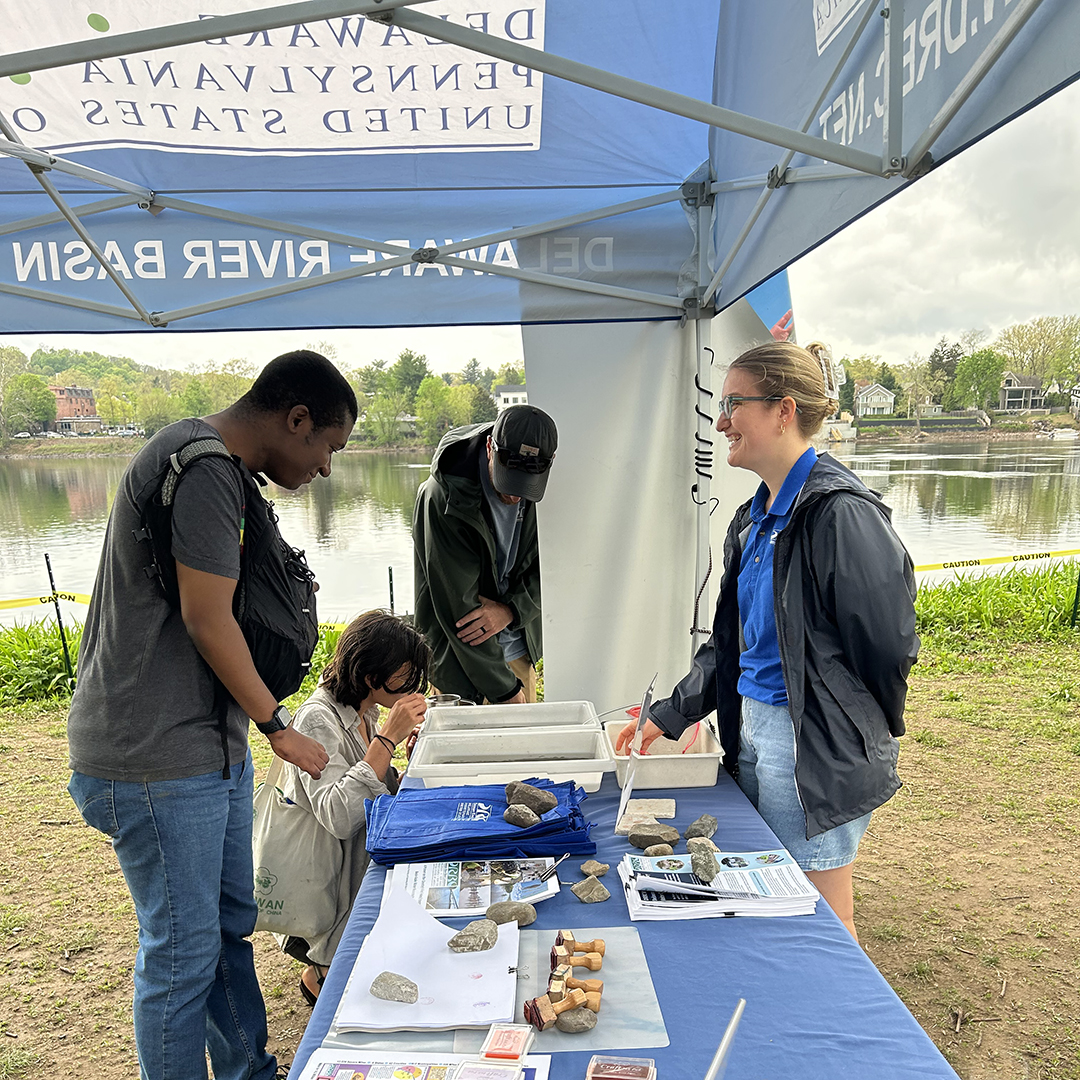Delaware • New Jersey • Pennsylvania
New York • United States of America
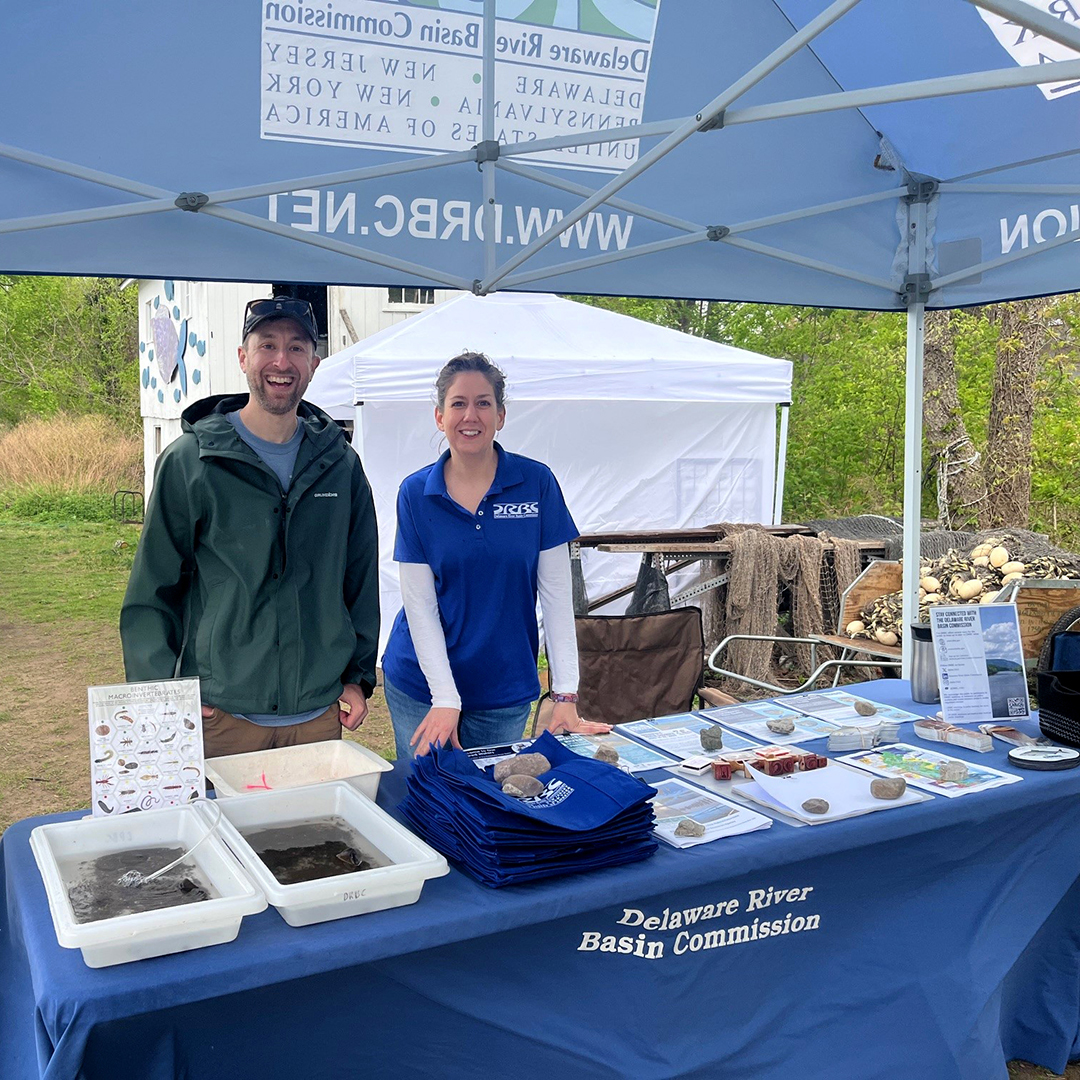 |
| The DRBC table at Shad Fest. Photo by the DRBC. |
Last month, DRBC staff excitedly returned to the historic Lambertville Shad Fest to celebrate its 42nd year!
This annual arts, music and environmental festival has been held along the Delaware River each spring to time with the return of the American shad, an anadromous fish that returns "home" each year to reproduce in the river in which it was born.
Our team was graciously hosted on the river's edge by the Lewis Fishery, the last N.J. commercial shad fishery on the non-tidal river. William Lewis established the fishery in 1888; his son Fred Lewis took over the family business. Upon Fred's passing in 2004, grandson Steve Meserve took the helm and carries on the tradition with a dedicated team of family and friends to this day.
DRBC staff led an educational demonstration that taught about the importance of macroinvertebrates ("macros" or aquatic insects) as indicators of water quality. Visitors of all ages had the opportunity to examine living macros that were collected right from the Delaware River off Lewis Island. The hands-on lesson explained that the type and amount of bugs found in a waterway can help tell how healthy the river is. Some bugs, for example mayflies, stoneflies and caddisflies, are sensitive to pollution; others, such as scuds, crayfish and aquatic worms, are more pollution tolerant. Finding more pollution-sensitive species and a wide variety of species - which we did at Shad Fest - are positive indicators of a waterway's health.
Staff happily shared their tabling space with SPLASH. SPLASH stands for Student Participation in Learning Aquatic Science & History and is a Lambertville-based nonprofit whose mission is to provide unique educational adventures that inspire both children and adults to learn about the Delaware Watershed, STEM sciences, local history and more. The organization has also been a longstanding partner of DRBC through the Our Shared Waters initiative, which seeks to build public awareness of the far-reaching natural resource value of the Delaware River Basin.
During Shad Fest, the Lewis Fishery shared videos, photos and articles spanning over a century, and they also demonstrated how they fish for shad with a net, a traditional technique known as seining. During the spring spawning run, which is typically from April to ~mid-May, the Fishery is out nearly daily fishing for shad. While their Shad Fest demos did not yield any shad (they caught catfish and quillback), in the days before and after the festival, they caught several hundred shad! Most are returned to the river, as are other fish caught in the net. The only fish that are kept are sold on-demand to the local community. Importantly, the data they collect on shad and other fish in the river are shared with state fisheries biologists, providing a vital, century-long dataset on overall shad numbers, males vs. females and more.
• One Family's Relentless Pursuit of the Bony, Oily, Elusive Shad (New York Times, April 26, 2025)
Community outreach is an important way for DRBC staff to engage with the public, inform about what we do, and also talk about they too can do to help keep our shared waters healthy and sustainable. DRBC has been participating in Shad Fest for roughly 30 years, and we look forward to next year's celebration!
Copyright © Delaware River Basin Commission,
P.O. Box 7360, West Trenton, NJ 08628-0360
Phone (609)883-9500; Fax (609)883-9522
Thanks to NJ for hosting the DRBC website
